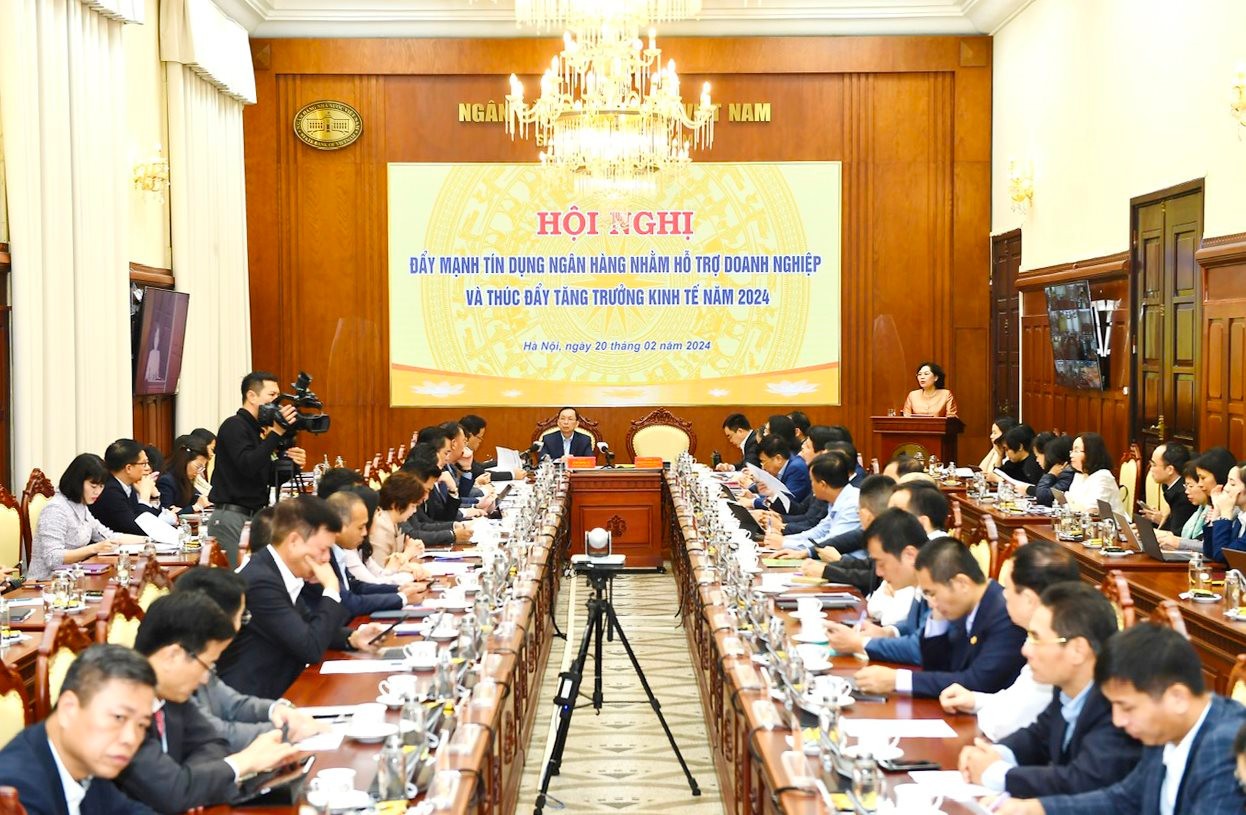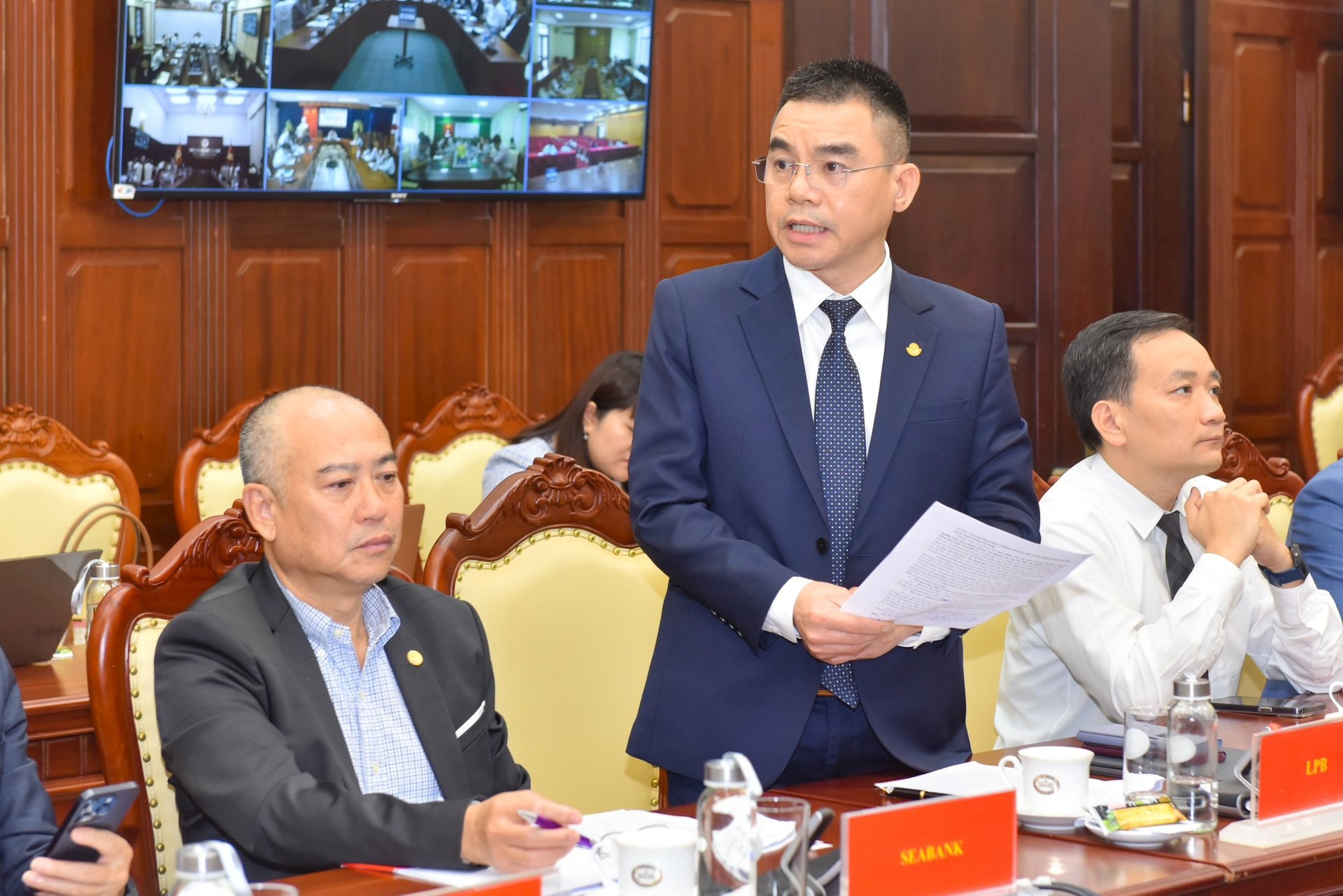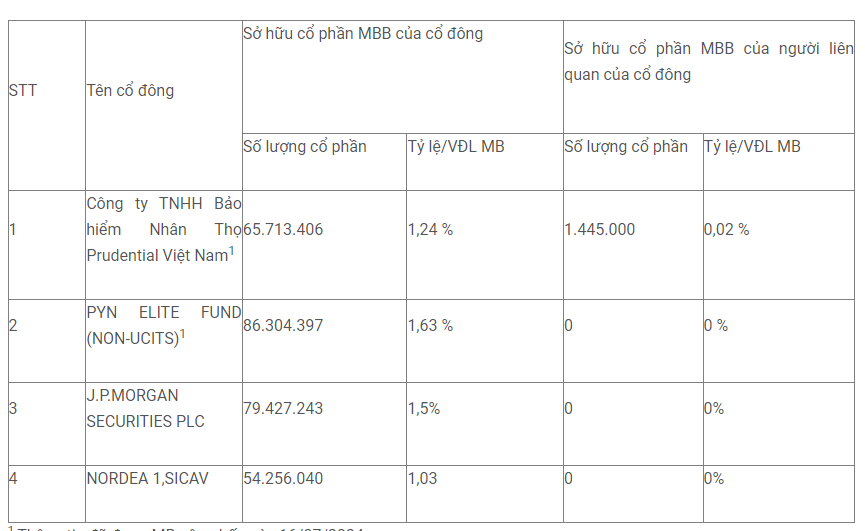Slow Credit Growth
According to the latest data released by the State Bank of Vietnam at the Conference on Boosting Bank Credit to Support Businesses and Promote Economic Growth in 2024, by the end of 2023, total credit in the economy increased by 13.71% compared to the end of 2022. However, in January 2024, the overall credit decreased by 0.6% compared to the end of 2023.

The Conference on Boosting Bank Credit to Support Businesses and Promote Economic Growth in 2024
Explaining the reasons for negative credit growth, Nguyen Quoc Hung, Vice Chairman and General Secretary of the Vietnam Banking Association, affirmed that it was due to the low credit demand in the economy. Additionally, with the increasing risk of bad debt and the upcoming expiration of Circular 02, credit institutions are more cautious in lending.
Sharing the same view, Nguyen Thanh Tung, CEO of Vietcombank, also stated that the credit decline in the early months of the year was due to low credit demand in the economy, a stagnant real estate market due to unresolved legal issues. Moreover, the disruption of global supply chains has made businesses reluctant to operate, resulting in a lack of loan demand.
Do Thanh Son, Deputy CEO of VietinBank, attributed the main bottleneck in credit growth to the declining credit absorption of businesses due to the impact of macroeconomic factors both domestically and internationally.
“The stability and development of business operations are prerequisites for boosting credit growth and ensuring the smooth operation of the credit institution system as well as the entire economy,” Son said.
In addition to the above reasons for the decline in credit in the early months of the year, Tran Long, Deputy CEO of BIDV, believed that economic growth drivers such as export, consumption, industrial production, and private investment are still slow. Many businesses are facing difficulties in terms of legal issues, business environment, and increased logistics costs due to the ongoing trade war, while the market conditions remain challenging.
“Many businesses have low management capacity, weak financial health, inconsistent financial reports and actual conditions, leading to difficulties in evaluating and granting credit to these businesses,” Long pointed out.
To promote credit growth, Nguyen Quoc Hung emphasized that the efforts of the banking sector alone are not enough. It requires the collaboration of ministries, sectors, and localities in issuing solutions and resolving legal difficulties to stimulate domestic consumption, thereby effectively promoting credit growth.
Similarly, Deputy CEO of VietinBank suggested that relevant ministries, sectors, and localities take measures to boost domestic consumption, continue to implement preferential policies to attract foreign investment, create a transparent and favorable legal environment for business operations, conduct research on support policies and tackle difficulties faced by businesses, diversify supply chains and partners, and promote solutions to enhance the competitiveness of businesses and integrate into the global value chain.
“Based on the allocated credit growth limit given by the State Bank, VietinBank commits to continue implementing a set of measures to reduce interest rates, promote credit growth, and closely follow the guidance and directions of the Government and the State Bank,” Do Thanh Son affirmed.

Nguyen Thanh Tung, CEO of Vietcombank proposes that the State Bank of Vietnam continue to maintain stable monetary policies
To promote credit growth in 2024, Nguyen Thanh Tung stated that Vietcombank would continue its policy of low lending rates compared to the market, continue to remove obstacles and streamline credit procedures, simplify loan processes… besides, investing in credit growth in production and business sectors, priority sectors according to the Government’s direction.
However, to achieve high effectiveness of the bank’s solutions, Nguyen Thanh Tung recommended that the State Bank of Vietnam continue to maintain stable monetary policies, as well as support credit institutions in making recommendations to the Government, ministries, sectors, and localities to remove legal obstacles for projects to be implemented quickly.
Pham Toan Vuong, CEO of Agribank, pledged that in 2024, Agribank would continue to manage deposit interest rates similar to those of state-owned commercial banks to stabilize market sentiment, while proactively reducing operating costs to create a basis for reducing lending rates and continuing to implement preferential credit programs targeting priority customer groups in agriculture and rural areas, exports, small and medium-sized enterprises, etc.
“Agribank commits to continuously align with the guidance of the Government, the State Bank; vigorously implement effective solutions to promote safe and effective credit growth; continue to implement preferential credit programs for each customer group,” said Pham Toan Vuong, emphasizing that, in addition to the efforts of the banking system, there needs to be active participation from various levels of authority from central to local in solving legal issues related to investment projects, improving the business environment, simplifying investment procedures and administrative processes, facilitating business activities for people and enterprises.
Challenges in Publicizing Interest Rates
According to Deputy Director of the State Bank of Vietnam, Dao Minh Tu, in order to boost credit into the economy and provide more opportunities for individuals and businesses to access credit, the State Bank has implemented a policy to publicly disclose the average interest rates of credit institutions and the average lending rates of each credit institution to enable businesses and individuals to choose banks with lower interest rates for borrowing.
“Credit is a very important task, and the State Bank of Vietnam has been focusing on it from the beginning of the year. Banks must publish lending rates for customers to know and choose. There are no penalties, but people and businesses will know and monitor,” emphasized Deputy Director Dao Minh Tu.
Regarding this policy, most representatives of banks attending the conference agreed and stated their consent to implementation. However, bank representatives also suggested that the State Bank of Vietnam consider publicizing interest rates for business customers.

Huynh Nam Tien, CEO of LPBank mentioned that the difference between the input and output interest rates for short-term loans is not significant, therefore, customers do not react
Huynh Vietnam Tien, CEO of LPBank, said that there is no problem with publishing the average interest rates for short-term loans to banks. According to Tien, the difference between the input and output interest rates for short-term loans is not significant, so customers do not react.
However, for medium and long-term loans, LPBank received reactions from customers when the preferential period ended. “Recently, we have lowered interest rates by 1.5% – 2%, and some customers have been reduced by up to 3%. However, there are still customers who borrow at interest rates of 10 – 11% per year for medium and long-term loans but still react to the bank. The reason is that the input deposit interest rate is only 6 – 7% per year at most, and even short-term deposits are only 2.7%,” Tien said.
“If we publicly disclose the average lending rates for the entire bank, existing borrowers will continue to demand reduced interest rates, even though they may have received preferential rates in the past 12 months. This poses difficulties for the bank,” Tien expressed. He also proposed that the State Bank of Vietnam reconsider the public disclosure of average lending rates.
Similarly, Pham Quang Thang, Deputy CEO of Techcombank, believed that for business loans, the actual lending to businesses depends on each enterprise, group of enterprises, risk level, etc. Therefore, publicizing the average lending rates for business customers has many difficulties and shortcomings. According to Thang, it is only possible to publish interest rates for individual customers.
“For business customers, we take into account the overall interests, and the lending rate will depend on the credit relationship between the bank and the business, as well as the collateral, strategy, and business plan of the customer, to achieve an appropriate lending rate. Therefore, publicizing a general average lending rate for business groups will be difficult. We suggest publishing separate interest rates for short-term, mid-term, and long-term loans so that customers can compare,” suggested Pham Nhu Anh, CEO of MBBank.
Not only the joint-stock commercial banks, but also state-owned banks find it challenging to publish average lending rates. Nguyen Thanh Tung expressed his desire to only focus on publicizing average lending rates to individual customers.
Meanwhile, Tran Long assessed that publicizing average lending rates for individual customers is suitable, but for organizational customers, it is not really appropriate. He suggested that the State Bank of Vietnam consider and guide how to publicize or periodically disclose this information, which would be more suitable for credit institutions.





![[Photo Essay]: Experts, Managers, and Businesses Unite to Forge a Path Towards Sustainable Green Industry](https://xe.today/wp-content/uploads/2025/07/z678592918-150x150.jpg)


![[Photo Essay]: Experts, Managers, and Businesses Unite to Forge a Path Towards Sustainable Green Industry](https://xe.today/wp-content/uploads/2025/07/z678592918-100x70.jpg)






